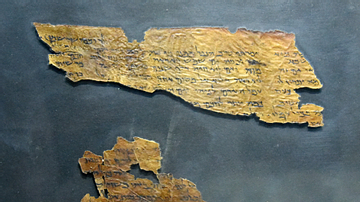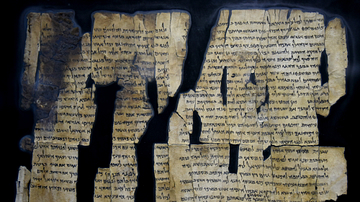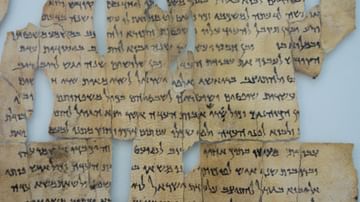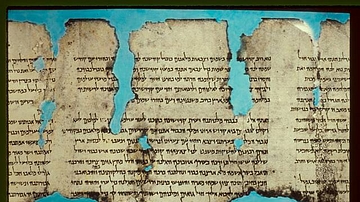Illustration
Qumran was mainly occupied during the Greco-Roman period (c. 150 BCE-68 CE) by a community generally identified as the Essenes, a religious sect, which lived in isolation in this region west of the Dead Sea. The cave and a series of scrolls were discovered in 1947 CE by a Palestinian shepherd called Mohammad al-Theeb, gaining the site international attention. The scrolls would become known as the "Dead Sea Scrolls," and the cave was excavated in 1949 CE by a joint expedition from the Jordan Department of Antiquities, the Palestinian Archaeological Museum and the école Biblique Francaise.
About the Author
Cite This Work
APA Style
Murray, D. (2015, June 30). Qumram Caves. World History Encyclopedia. Retrieved from https://www.worldhistory.org/image/3981/qumram-caves/
Chicago Style
Murray, Dana. "Qumram Caves." World History Encyclopedia. Last modified June 30, 2015. https://www.worldhistory.org/image/3981/qumram-caves/.
MLA Style
Murray, Dana. "Qumram Caves." World History Encyclopedia. World History Encyclopedia, 30 Jun 2015. Web. 13 Apr 2025.








